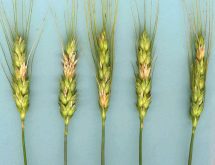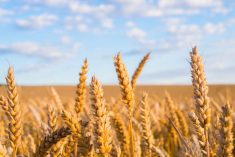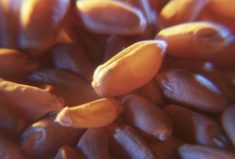“Generally, they are forgotten wheats, but hopefully, we can keep them alive for future generations.”
– SCOTT CHALMERS
The ancient grains, placed right next to plots of the latest high-yielding barley varieties, may look like poor cousins to their modern descendants.
They may not stand as tall, or yield as heavily, but they still have important uses, said Scott Chalmers, a research technician at the Westman Agricultural Diversification Organization’s farm in Melita.
Plant breeders continue to tap their genes as they search for improved disease resistance, and celiac sufferers find that the low-gluten content in some old varieties helps to alleviate their symptoms.
Read Also

Mazergroup’s Bob Mazer dies
Mazergroup’s Bob Mazer, who helped grow his family’s company into a string of farm equipment dealerships and the main dealer for New Holland machinery in Saskatchewan and Manitoba, died July 6 from cancer.
In some parts of the world with arid, low-fertility soil conditions, farmers find that they are still viable crops for use as animal feed. In some countries, they are used for making culturally important foods.
“Generally, they are forgotten wheats, but hopefully, we can keep them alive for future generations,” he said.
The ancient wheats, many of which originated in the fertile crescent of Mesopotamia, or present-day Iraq, are either the original parent lines of today’s wheats, or mutations that have sprung up at some point in the distant past.
That’s why their greatest value may lie in their genetic diversity. After centuries of hybridization, modern wheat varieties are typically hexaploid, which means that they have six sets of chromosomes.
Dwarf Indian, Club and Rivet wheat, on the other hand, are tetraploid, which means that they have four sets of chromosomes.
Black einkorn, which has been found in 4,000-year-old Egyptian tombs and is still grown in some isolated regions, is diploid with two sets of chromosomes, just like humans and most other organisms.
The seed for the WADO plots came from Viterra, which had grown the grains as part of a tourism attraction in Yorkton. The original seed, however, came from Prairie Garden Seeds in Muenster, Saskatchewan.
Poor results in some of the plots, may have been due to the fact that some of the seed had been hulled, he said. Also, because there wasn’t much seed available to share with the other diversification plots around the province, seeding rates in some of the plots were much too low at only about 20 pounds per acre.
“Nonetheless, we’re going to get a harvest and something that we can look at, then maybe next year we’ll throw it into a yield trial and see what these old wheats yield in the end,” said Chalmers.
Of the varieties, kamut, stood out as the best performer. With large, plump kernels, the ancient relative of durum, is said to contain more energy, minerals and antioxidants than other wheats.
How it came to be revived in North America is an interesting yarn.
According to www.kamut.com,
a visiting American airman, who fell for the unlikely sales pitch that it came from an ancient tomb, bought a packet of 32 of the giant-size kernels in 1949 from an Egyptian street hawker.
He gave it to an acquaintance, Earl Dedman, who sent it to his father in Fort Benton, Montana.
The Dedmans grew it in small plots as a novelty that attracted the attention of the local press for its moniker “King Tut’s wheat,” but no commercial market could be found for it.
Then in 1977, an entrepreneur propagated 90 pounds of seed, but it was again forgotten for a decade until it found a niche in the health food market.
From a 1.5-acre plot seeded with the original 90 pounds in 1986, the total acres seeded to kamut in Montana, Saskatchewan and Alberta had grown to over 45,000 in 2008, and now the grain is used by over 50 companies to make more than 80 products, including breads, pasta, cereals, pastries and beer.
Other ancient grains, such as spelt, also known as “dinkel” in Germany, have made significant inroads into the modern market. CDC Nexon, which first became available in 2003, is the first registered spring spelt cultivar in North America.
Scott Day, a MAFRI diversification specialist at WADO, said that the decision to plant the “really old stuff” was made after numerous inquiries from the public were received.
“Mainly through the winter, as people are reading, they’ll ask, ‘Have you got some stuff on kamut, or spelt, or these sorts of crops,” he said.
“Given that this year is the 100th anniversary of Marquis wheat, it’s kind of interesting to see how far we have come in cereal production.” [email protected]


















